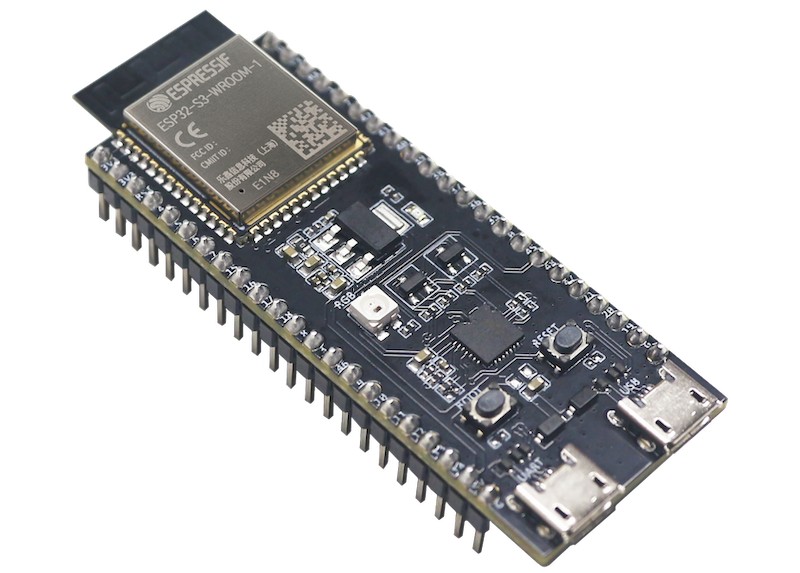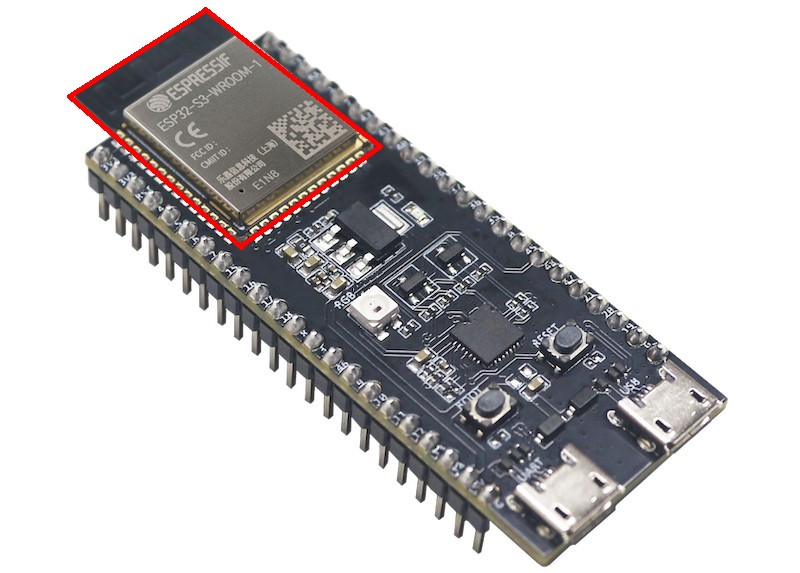ESP32 in a Commercial Product? – From Prototype to Production [YouTube]
The ESP32 is a wireless microcontroller that’s really popular with makers and hobbyists.
But what about using the ESP32 in a commercial product that will be mass manufactured?
Is that realistic? And if so, is it a good or bad idea to use the ESP32 in your product?
Well, that’s what I’m going to answer for you in this video.
Plus near the end of this video I share a few inspirational product examples for you.
The ESP32 is available in several versions but they are all based on a high-performance, 32-bit microcontroller, available in single or dual core versions.
They are also all embedded with various wireless radios.
There are versions that support only WiFi, versions that support WiFi and Bluetooth, and even versions that support WiFi, Bluetooth, ZigBee, and Thread.
Before answering if the ESP32 is a good solution for mass production, let’s first quickly discuss if it’s a good fit for your application.
First of all, does your product need a microcontroller or a microprocessor?
Although the ESP32 is a very high performance microcontroller, it’s not to be confused with a microprocessor.
Although, it can still be used along with a microprocessor for adding wireless functionality to a system.
At this point, let’s assume you do need a microcontroller.
The next question is, do you need WiFi?
If the answer is yes, then the ESP32 is a fantastic solution. Probably the best in my opinion.
But, if you don’t need WiFi, and don’t anticipate ever needing it in the future, then the ESP32 is likely not a good choice.
If you need other wireless protocols in addition to WiFi, including Bluetooth, ZigBee, and Thread, then the ESP32 is still a great choice.
However, if you don’t need WiFi there are likely better choices for adding these other wireless protocols that will consume less power.
For example, I really like the Nordic nRF52 series of 32-bit wireless microcontrollers.
Okay, but what about using the ESP32 for mass production, assuming it is a good solution for your product?
Well, I have good news!
Unlike other popular DIY development boards such as Arduino and Raspberry Pi, the ESP32 is a fantastic option for a commercial product!
In fact, we’ll look at a few successful products using the ESP32 later in this video.
The ESP32 happens to be one of my favorite solutions for new commercial products that need WiFi.
This is partially because the ESP32 has a smooth upgrade path from early prototyping all the way to mass manufacturing.
You can purchase ESP32 development boards like this one here for early prototyping, which is similar to using an Arduino, only a lot more powerful.
Most makers and hobbyists use these, since custom PCB design isn’t required.
But these ESP32 development boards can also sometimes be embedded inside products for sale, at least initially.
This isn’t feasible for most products, but if you have the space, and your budget is severely limited this can be a cheap way to get units in the market.
I always encourage you to take the path that allows you to get something in the hands of paying customers as soon as possible and for as little capital as possible.
The next step up from development boards are surface-mount modules that can be soldered directly onto your main PCB.
These modules are typically used for moderate manufacturing volumes up to a few hundred thousand units.
They are available with either an on-board PCB antenna or with a connector for using an external antenna.
You can see the module here soldered onto this development board, and you can see the built-in PCB antenna hanging over the board edge.
One of the main reasons to use these modules is they’re pre-certified which simplifies the emissions certification process if used in a commercial product.
In the U.S. this is your FCC certification, and in Europe it falls under CE certification.
By using these modules you also greatly simplify your design because they’ve taken care of all the complex RF design.
Designing custom wireless circuits is complex and expensive, so these modules eliminate a lot of that complexity and design risk.
Finally, for very high volume production that’s usually over a few hundred thousand units, you can purchase the ESP32 as a bare chip for use in a fully custom RF design.
Typically it only makes sense to upgrade to a bare chip design if you are trying to really squeeze out more profit margin, or if you have serious size constraints.
One of the other things about the ESP32 that makes it a great option for use in commercial products is it’s really cheap.
Especially, considering all that it includes. Espressif is a Chinese company so the prices are very affordable for production.
And, the ESP32 also has a large user base with lots of online resources and support that’s available, which is helpful during development.
And, the ESP32 is one of the most popular choices used by members in my Hardware Academy, so you can get lots of help there too.
Okay, let’s now take a look at a few successful products on the market that use the ESP32.
SONOFF’s POW Elite
POW Elite is a smart power meter switch based on the ESP32 that allows users to track the power consumption of their appliances in real time.
Users can also control and monitor their home appliances remotely using their smartphone.
It can also interact though voice assistants like Alexa, so you can use voice control to turn things in your house on or off.
SimpliSafe SS3
SimpliSafe is a big success story in the field of smart home security systems, and the ESP32 allows their cameras and sensors to communicate wirelessly with the product’s base station.
SimpliSafe disrupted the entire market, by offering the only home security option that didn’t require customers to sign a yearly contract with high monthly fees.
They’re also installed by the customers themselves so you don’t pay an installation fee. This means renters, not just homeowners, can easily add the system to their homes.
Wemo Smart Plugs by Belkin
Belkin’s Wemo Smart Plugs is another type of smart plug that let’s users remotely operate their home appliances or anything that is plugged into the Wemo.
These smart plugs use the ESP32 to connect to a range of home automation systems and devices via WiFi and Bluetooth.
The ESP32’s capacity to provide connectivity contributed to the plugs’ commercial success by making it compatible with many smart home ecosystems like Apple HomeKit, Google Assistant, and Amazon Alexa.



